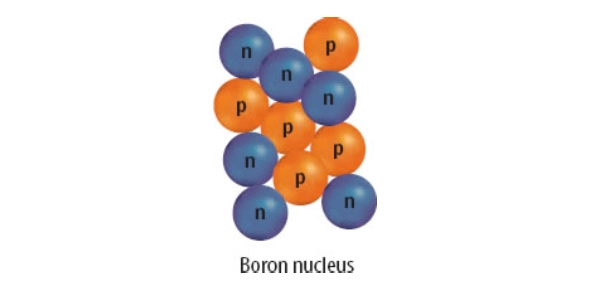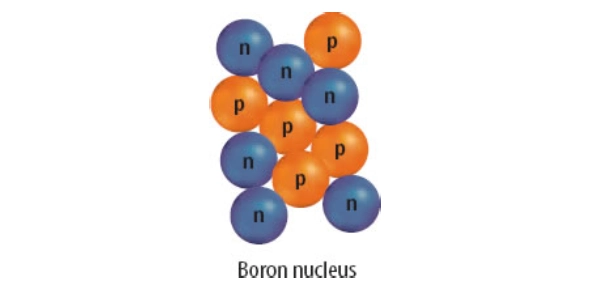Inside The Atom Quiz: Explore The Atomic Structure
(94).jpg)
Get ready to explore the fascinating world of atomic structure with our Inside the Atom Quiz! This comprehensive quiz will challenge your understanding of the atom's fundamental building blocks, including protons, neutrons, and electrons, and how they come together to form the nucleus and electron orbitals.
Do you know what makes isotopes unique or how electron configurations determine an element's chemical properties? Our quiz takes you on a journey inside the atom, testing your knowledge of atomic theory, subatomic particles, and nuclear forces. From understanding Rutherford's gold foil experiment to distinguishing between orbitals and shells, this quiz covers all Read morethe essential concepts.
Whether you're a student preparing for exams, a chemistry enthusiast, or simply curious about the microscopic world, this quiz provides a fun and informative way to solidify your grasp on atomic theory. Each question is carefully curated to reinforce your understanding of key topics like isotopes, atomic mass, and electron configurations. Take the Inside the Atom Quiz now and see how well you understand the hidden world inside every element!
Inside the Atom Questions and Answers
- 1.
What particle is not found in the nucleus?
- A.
Proton
- B.
Neutron
- C.
Electron
- D.
Nucleus
Correct Answer
C. ElectronExplanation
Electrons are not found in the nucleus. They are negatively charged particles that orbit around the nucleus in specific energy levels. Protons and neutrons, on the other hand, are found in the nucleus. Protons have a positive charge, while neutrons have no charge. The nucleus itself is the central part of an atom that contains protons and neutrons. Therefore, the correct answer is electron.Rate this question:
-
- 2.
Name the particle that has a positive charge:
Correct Answer
proton
protonsExplanation
A proton is a subatomic particle that carries a positive charge. It is found in the nucleus of an atom and is one of the fundamental particles that make up matter. Protons are essential for the stability and structure of atoms, as they determine the atomic number and help to define the element. The term "protons" is also correct, as it refers to multiple individual proton particles.Rate this question:
- 3.
Which particle is neutral (has no charge)?
- A.
Proton
- B.
Neutron
- C.
Electron
- D.
Nucleus
Correct Answer
B. NeutronExplanation
A neutron is a subatomic particle that is neutral, meaning it has no charge. Unlike a proton, which has a positive charge, and an electron, which has a negative charge, a neutron has no charge at all. This is because it is made up of three quarks - two down quarks and one up quark - that combine to give it a neutral overall charge. Neutrons are found in the nucleus of an atom along with protons, and their neutral charge helps to stabilize the nucleus.Rate this question:
-
- 4.
What is the atomic number of the atom shown?
- A.
4
- B.
5
- C.
6
- D.
11
Correct Answer
B. 5Explanation
The atomic number of an atom represents the number of protons in its nucleus. In this question, the correct answer is 5, which means that the atom shown has 5 protons in its nucleus.Rate this question:
-
- 5.
What is the atomic mass of the atom shown?
- A.
4
- B.
5
- C.
6
- D.
11
Correct Answer
D. 11Explanation
The atomic mass of an atom is the sum of the number of protons and neutrons in its nucleus. In this case, the atom shown has an atomic mass of 11, which means it has 11 protons and neutrons combined.Rate this question:
-
- 6.
Protons and neutrons are found where in an atom?
Correct Answer
nucleus
the nucleusExplanation
The correct answer is "nucleus". Protons and neutrons are found in the nucleus of an atom. The nucleus is the central part of an atom where most of its mass is concentrated. It contains positively charged protons and neutral neutrons. The electrons, which are negatively charged, orbit around the nucleus in specific energy levels.Rate this question:
- 7.
Where are electrons found in an atom?
Correct Answer
electron cloud
electron clouds
electroncloudsExplanation
Electrons are found in the electron cloud, which is a region surrounding the nucleus of an atom. The electron cloud is a probabilistic model that represents the likelihood of finding an electron in a particular location around the nucleus. It is often depicted as a fuzzy cloud-like structure, as electrons do not have fixed orbits but exist in a state of constant motion within the cloud. The terms "electron clouds" and "electronclouds" are alternative ways of referring to this region where electrons are located.Rate this question:
- 8.
To find the atomic number of an atom, you would:
- A.
Count the protons
- B.
Count the neutrons
- C.
Count the electrons
- D.
Count the protons and neutrons
Correct Answer
A. Count the protonsExplanation
To find the atomic number of an atom, you would count the protons. The atomic number represents the number of protons in an atom's nucleus. Protons have a positive charge and are unique to each element, so counting the protons gives you the atomic number, which is used to identify and classify elements on the periodic table. Counting the neutrons and electrons is not necessary to determine the atomic number.Rate this question:
-
- 9.
To find the mass number of an atom, you would:
- A.
Count the protons
- B.
Count the electrons
- C.
Count the neutrons
- D.
Count the protons and neutrons
Correct Answer
D. Count the protons and neutronsExplanation
To find the mass number of an atom, you need to count the protons and neutrons. The mass number is determined by the sum of these two particles in the nucleus of an atom. Protons carry a positive charge and are responsible for the element's identity, while neutrons have no charge and contribute to the atom's mass. Electrons, on the other hand, are located in the electron cloud surrounding the nucleus and have negligible mass compared to protons and neutrons. Therefore, counting only the protons and neutrons will give you the correct mass number of an atom.Rate this question:
-
- 10.
Which particle has a negative charge?
Correct Answer
electron
electronsExplanation
Electrons are particles that have a negative charge. They are subatomic particles that orbit around the nucleus of an atom and are responsible for the flow of electricity. Electrons are fundamental building blocks of matter and play a crucial role in chemical reactions and the behavior of atoms.Rate this question:
Quiz Review Timeline +
Our quizzes are rigorously reviewed, monitored and continuously updated by our expert board to maintain accuracy, relevance, and timeliness.
-
Current Version
-
Sep 02, 2024Quiz Edited by
ProProfs Editorial Team
Expert Reviewed by
Zohra Sattar Waxali -
Oct 22, 2008Quiz Created by
Dbynagle




